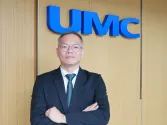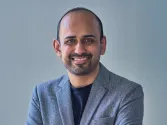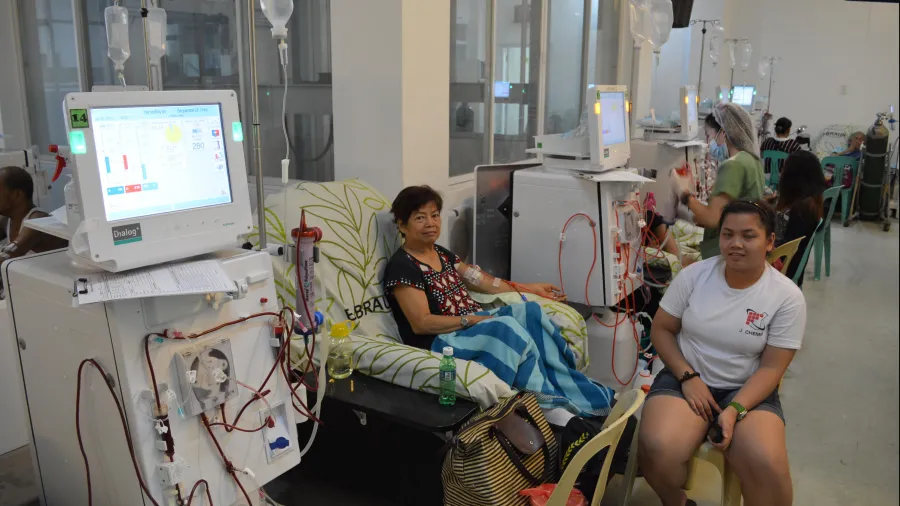
Gat Andres Bonifacio Memorial Medical Center: The Philippine model in free dialysis treatment
See how a hospital is tackling the problem of unaffordable dialysis treatments.
When the former president Joseph Ejercito Estrada was walking around his then-presidential home of Malacanang several years ago, he noticed that a large number people had gathered and they formed queues snaking through the halls. Curious, he followed to where the lines went and discovered the cause of the commotion: There was a 10-unit dialysis centre providing free treatments that many of those present desperately needed but could not afford without financial assistance.
The fact that poor patients were trooping all the way to the presidential palace to avail of free dialysis treatments seemed to have stirred Estrada’s heart, and this led to an initiative prompting the city of Manila to establish additional free dialysis centres and expand access to the life-saving treatments.
“The cost for each treatment was P2,000 to P2,500 ($45 to $55), which was hard to shoulder for poor patients, which end up dying without treatment,” says Dr Luisa Aquino, chairman of Gat Andres Bonifacio Memorial Medical Center (GABMMC), a hospital that has emerged as one of the pillars of free dialysis treatment not only in the city of Manila but in the entire country.
Aquino remembers how at the time when Estrada first learned of the huge servicing gap in dialysis treament, the government-owned health insurance corporation PhilHealth was only sponsoring 52 treatments a year, or less than a third of the 168 treatments a patient would need per year.
But after interventions and increased funding priority, that number has spiked to 90 sponsored treatments per year. The city of Manila was also one of the first cities to take action and fill the huge gap in treatments, but it was through circumstance that GABMMC began its ambitious dialysis centre.
Dialysis centre is born
“Originally, the government was planning to house the dialysis centre in the Hospital ng Maynila but the building was still in construction, so it was offered to GABMMC,” recalls Aquino of how the project statred.
“Because of the space, we computed that we could afford the space to accommodate 60 machines. A 60-unit facility would be the biggest in the country, larger than the 40-unit facility in the National Kidney and Transplant Institute in Davao.”
Being a public hospital, there was a question on how GABMMC would fund this groundbreaking dialysis centre and keep it operational, especially with a goal of providing free dialysis treatments to Filipinos in need.
One of the first steps for the hospital was to secure the support of the city council. A feasibility study was also drafted and passed, which helped ensure that the project would be sustainable based on the available city budget.
It also needed to find a partner that would be able to pour in the multi-million-peso investments for the dialysis machines, which the hospital found in the form of a joint venture agreement with B. Braun, the largest dialysis servicing company in the country, plus assistance from the likes of the Philippine Amusement and Gaming Corporation.
“Legally, the advise is, the city council had to establish a resolution to permit a joint venture. Before that, the city council established a joint venture resolution authorising the city government, which is the legal basis for the dialysis centre,” says Aquino.
Aquino recalls how when the dialysis centre project was first floated, there was a feeling of momentum rolling in as more partners came on board and pitched in different ways, especially financially.
“It all came flowing with the additional sources of funds. It's a big thing,” says Aquino.
It certainly helped GABMMC that it had a strong reputation for public service and more than a decade of experience in running a dialysis unit, which made it easy for partners to rally behind its dialysis centre and free treatment initiative.
GABMMC was established through the vision of the beloved mayor Alfredo S. Lim, which served the city as its two-time mayor from 1992 to 1998, and again from 2007 to 2013. The former mayor wanted GABMMC to be a hospital that would provide for the least fortunate residents of Manila, and with the enactment of City Ordinance No. 7947, a 6-storey building was erected at 8001 Delpan Street to serve as the hospital’s initial facility.
GABMMC became fully operational in 1999 was the fourth hospital built in the city. Its location in Tondo, Manila in District 1 made it especially accessible to a large concentration of the city’s most depressed and populated areas. The hospital would help provide affordable medical services to these residents – it began with an out patient department then quickly added emergency room and wards – spanning a vast catchment area of 137 barangays inclusive of Parola, Smokey Mountain, Recto, Divisioria, Balut, Velasquez and Vitas.
Adding more services since opening in 1999, GABMMC debuted its dialysis unit in 2004 with four machines, then adding a few more machines in the years following. While the hospital has constantly improved its number of beds as well as expanded its services to even include pediatric intensive care units and an operating room complex, it is arguably Estrada’s fateful encounter with the dialysis treatment lines in Malacanang and subsequent initiative to build a large a dialysis centre in GABMMC that put the hospital in the national health map.
The GABMMC dialysis centre – also known as the Manila Dialysis Center (MDC) – has gained steam because of its making as a priority project under the City Health Care Program, which is a subsidy for the indigent patients under the Orange Card Health Care System. This meant local government support and financing assistance would flow easier to the constructing the dialysis centre and sustaining its operations.
And so it was with these partnerships and extensive planning that the GABMMC dialysis center was established in December 2014 through a joint venture agreement forming a public-private partnership with B. Braun.
MDC was envisioned to become the largest dialysis center in the country with 100 machines that provide quality hemodialysis treatment at no cost to all Manila residents, and Aquino says the pieces all came together even though the project at once seemed impossible to pull off because of the high costs and manpower required.
Three-phase implementation
While the dream target of 100 machines is far from a reality, GABMMC has a plan to at least come close to that number. Phase 1, which is ongoing, has put 26 machines operational in MDC since December 2014.
The machines work in conjunction to offer free treatments 3 times a week for patients, which is a service that is superior to charity treatments in other hospitals, which only offer treatments 2 times a week.
“Because our funding is sustained, we are able to sustain the number of treatments weekly, in addition to the free medicine and supplies,” says Aquino.
MDC serves 26 patients daily multiplied to three shifts, equating to 78 sessions. The centre is also kept open six days a week from Monday to Saturday to ensure that the treatments are conveniently available to the patients.
Patients that want to avail of the dialysis treatmemts are required the bare minimum of what is required to deliver the service: An identification card, a prescription from the doctor, a laboratory test and clinical abstract.
While other free dialysis treatment centers might get clogged up with clients, MDC has devised a system to lower waiting times for patients. Emergency cases are handled immediately, and there is “almost always little ot none” waiting time for patients.
“In rare cases when there would be no vacancy, we transfer the patient to other centres for B. Braun. The patient would then wait for a vacancy in the main centre, which would take no more than a week. But usually, treatment starts immediately once the patient goes to the station,” says Aquino.
Part of what makes MDC quick in servicing clients is that there are two nephrologists who are in charge of the dialysis centres.
The strong backing and financial support for MDC has also enabled the hospital to offer intra-dialytic nutrition for the first time in the Philippines, assisting patients with kidney disease to battle malnutrition. It is being piloted with 10 patients.
Aquino says the extra effort to bring in cutting-edge treatment options to dialysis patients stems from GABMMC’s quality statement of “maintaining high standards of specialty health care by keeping abreast of the latest knowledge and skills in the treatment of illness and medical practices.”
Aquino says that as a public hospital and local government unit, there is the usual challenge of meeting patient demands, but she assures that the centre “has been largely problem-free.” She adds that while there has been an initial adjustment period, most of the kinks have been ironed out which has led to the current smooh and efficient treatment process.
No out of pocket expenses
In order to widen access to dialysis treatments to less affluent Filipino patients who badly needed them to survive, GABMMC was determined that the center would spare poor patients of all out of pocket expenses.
This required GABMMC to find partners and create terms of agreement that would distribute the treatment costs in a sustainable way.
Three partners would foot the dialysis treatment bills: Philhealth shoulders 48%, the city of Manila shoulders 45%; and the Philippine Charity Sweepstakes Office, a sweepstakes agency that raises funds in part to promote public health, would shoulder 7%.
GABMMC would pay for the facility and also staff the program with doctors, B. Braun would staff nurses and invest in the machines for the dialysis centre, an outlay that initially amounted to around P36 million.
“This project is a step towards the country achieving universal healthcare. It's definitely one of our goals,” says Aquino on why the hospital has been striving to provide free dialysis treatments in the past few years.
“To contribute as a local government unit, we participated not only by enrolling our poor patients to PhilHealth, but also by improving our facilities. Our role is to provide equipment, furnish facilities, and provide all the medicines to get rid of out-of-pocket spending,” she adds.
In fact, the GABMMC has stated in its vision statement that it will “provide affordable quality specialized health care comparable to that given in private hospitals, most specially to the less privileged residents of Manila.”
Furthermore, in conjunction of affordability, it stresses that it must deliver a high standard of health care to all patients through medical services from competent specialists that are not only very professional, but also compassionate.
Aquino reckons there is a need to amend the existing joint venture agreement so that any profit from the dialysis centre can be put into a trust fund, proceeds from which can be given back to the centre instead of just asking from the city. But so far, the free dialysis treatments have been a boon in saving and improving the lives of patients.
Nearing overcapacity
“The patients have been very thankful to both the city and hospital for the free treatments. It helps ease the burden for our poor patients who earn hardly enough. Our poor patients now get a lifetime of free and adequate treatments,” says Aquino.
“However, we are nearing overcapacity. Nowadays, the centre is almost always full and going overboard with the capacity, so we’re rushing the phase 2 right now. We’re confident that phase 2 will be opened sooner.”
Phase 2 would add 34 machines to the dialysis centre, and is currently undergoing the process for licensure with a target completion date in December 2016.
“We just waited for the Phase 1 machines to be used entirely, before we begin work on Phase 2. The location, actually, for phase 2 is ready. We just have to wait for the machines, which will be provided by B. Braun. We want the facility to be ready not just in terms of quantity, but also in terms of quality,” says Aquino.
There are even blueprints already for a phase 3. There is still space for the addition of 30 more dialysis machines, which will then push the total in the centre to around 90, almost close to the envisioned plan of 100 machines.
“The original plan was actually 100 machines, but logistically it is still not possible,” says Aquino, acknowledging some of the constraints of the hospital’s available floor area. “We might extend the area to increase the machines.”
Through its partnerships, sustainable financing plan, and high quality service delivery, the GABMMC dialysis centre has become one of the gold standards for dialysis treatment in the country, which has led questions on whether the model will be replicated in other parts of the city and the greater Metro Manila area.
Aquino says the hospital has no plans for expansion now, but she reckons it wouldbe ideal to put up a similar dialysis centre in the 300-bed Ospital ng Maynila, which is a non-profit tertiary facility where many poor patients consult and will benefit from free treatments. She reckons that if a plan to put up a dialysis centre pushes through in Ospital ng Maynila, two of the biggest hurdles in implementation would be to find the space to fit the machines and allotting the manpower to run the facility.
Inadequate funding
Along with overcapacity in its dialysis centre, GABMMC as a whole still faces funding hurdles especially for its other services, although Aquino and its administrators are hard at work to alleviate these concerns.
The Manila city budget in 2015 was P12.29 billion and around 20% or P2.44 billion was alloted for health. GABMMC received 15% of the total budget allocation for district hospitals, which until recently has been insufficient in funding hospital initiatives, from equipment upgrades to infrastructure improvements.
“There is very minimal funds for improvements for the hospital and for the equipment. So it was difficult for us to get by after years of wear-and-tear in the hospital. It’s also been hard to request for repair, maintenance and repainting for the hospital,” says Aquino.
“These recent years, however, the government prioritised the hospital more, leading to complete renovations for the hospital. Before, the hospital looked like a traditional, beaten down government hospital. Now, we renovated almost every patient room, including the patient wards. We’re also buying equipment little by little, including specialised equipments,” she adds.
Aquino reveals that what makes the MDC special is its financial sustainability, a critical feature that is hard to replicate in other projects. She gave as an example an eye center the hospital had established. Using the modernisation fund, the hospital procured equipment for eye treatments and cataract surgery, which can be quite expensive and are also desperately needed by Manila residents.
“The eye center was originally was not funded by the government and no capitalisation at all. The only thing we had for the centre was the doctors. Due to the strains of the eye center, the facility was forced to charge patients for treatment eventually,” laments Aquino, contrasting to the free service that it offers to dialysis patients via the MDC.
“What was happening was, doctors were not able to provide the adequate services as there was not enough funding. That went on for 10 years, from 1998 to 2008. From 2008 until now, the equipment is both minimal and low quality. This was typical of a government-run centre,” she adds.
Aquino reckons that the free model of the dialysis centre cannot be applied to the eye center due mainly to a lack of partnership like the one forged with B. Braun for MDC.
Still, the eye center is not without funding support. PhilHealth continues to be one of the biggest sources for assistance for the eye center, and the funds that flow from the program are spent on equipment, room renovations and supplies.
“It’s a huge help, considering that the bulk of our budget is mainly for personnel services,” says Aquino, but she adds that more can be done to provide eye treatments for Manila residents.
“Our current problem is that PhilHealth is restricting the number of cataract surgeries per doctor, due to a problem in monitoring the reimbursement. There was a time when they overpaid for the cataract surgeries, and they had to curb their expenses. Each doctor can now do only 50 cataract surgeries per month, be it private or charity. We’re hoping to appeal, but we’re working with the restriction now,” says Aquino.
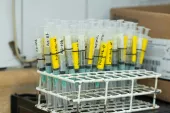
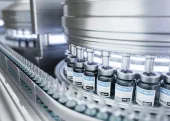
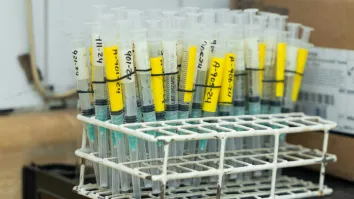

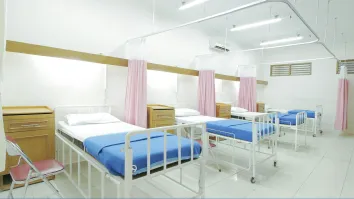














 Advertise
Advertise
